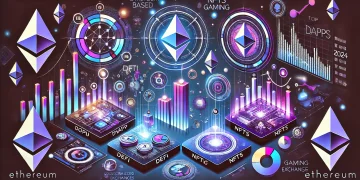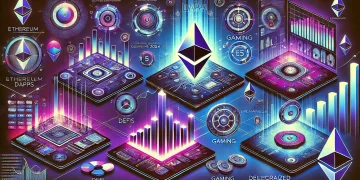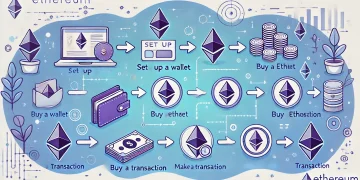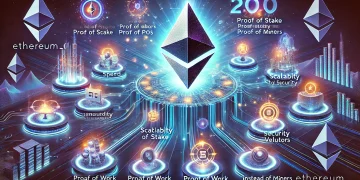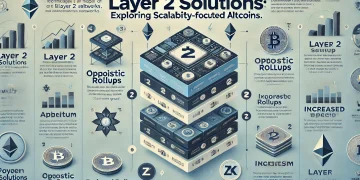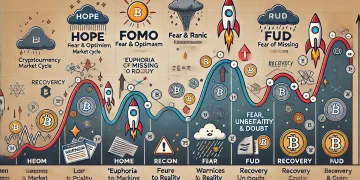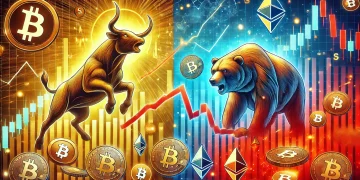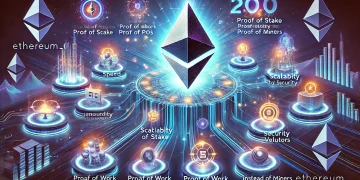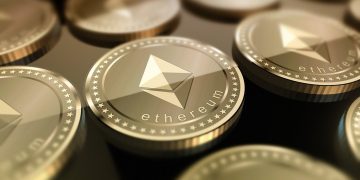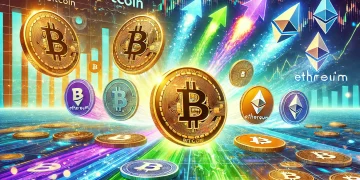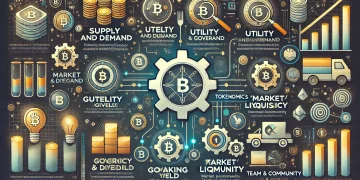Ethereum, the world’s second-largest cryptocurrency by market capitalization, has revolutionized the blockchain space with its smart contract functionality. However, one of the most significant challenges faced by Ethereum users is the sometimes high and volatile transaction fees, known as gas fees. This comprehensive guide will explain what Ethereum gas fees are, why they exist, and provide practical tips to help you reduce your transaction costs.
Understanding Ethereum Gas Fees
What is Gas?
In the context of Ethereum, “gas” refers to the unit that measures the amount of computational effort required to execute specific operations on the Ethereum network. Every transaction, smart contract execution, or interaction with a decentralized application (DApp) on Ethereum requires gas.
How Gas Fees Work
Gas fees are paid in Ether (ETH), Ethereum’s native cryptocurrency. The total gas fee for a transaction is calculated by multiplying two main components:
- Gas Limit: The maximum amount of gas you’re willing to spend on a transaction.
- Gas Price: The amount of ETH you’re willing to pay per unit of gas.
Total Gas Fee = Gas Limit × Gas Price
Why Do Gas Fees Exist?
Gas fees serve several crucial purposes in the Ethereum ecosystem:
- Network Security: Fees prevent spam attacks by making it costly to flood the network with transactions.
- Incentivizing Miners/Validators: Fees reward miners (or validators in Ethereum 2.0) for processing and validating transactions.
- Resource Allocation: Fees ensure efficient use of network resources by prioritizing transactions willing to pay more during high-demand periods.
Factors Affecting Gas Fees
Several factors influence the cost of gas on the Ethereum network:
- Network Congestion: During periods of high activity, gas prices increase as users compete to have their transactions processed quickly.
- Transaction Complexity: More complex operations (like interacting with smart contracts) require more gas than simple transfers.
- Overall Ethereum Demand: Increased interest in Ethereum and its applications can drive up gas prices.
- ETH Price: As gas fees are paid in ETH, the dollar cost of fees can fluctuate with ETH’s price, even if the gas price in Gwei remains constant.
Tips to Reduce Your Ethereum Transaction Costs
Now that we understand how gas fees work, let’s explore strategies to minimize your transaction costs on the Ethereum network.
1. Use Gas Price Prediction Tools
Several websites and tools provide gas price predictions based on current network conditions. Some popular options include:
- ETH Gas Station
- Etherscan Gas Tracker
- MetaMask’s gas fee estimator
These tools can help you choose the optimal time to make your transaction when gas prices are lower.
2. Set Custom Gas Prices
Most Ethereum wallets allow you to set custom gas prices. By manually setting a lower gas price, you can potentially save on fees. However, be aware that setting the gas price too low may result in slower transaction times or even transaction failure.
3. Use Layer 2 Solutions
Layer 2 solutions are protocols built on top of Ethereum that handle transactions off the main chain, reducing congestion and fees. Popular Layer 2 solutions include:
- Optimistic Rollups (e.g., Optimism, Arbitrum)
- ZK-Rollups (e.g., Loopring, zkSync)
- State Channels (e.g., Raiden Network)
By using these solutions, you can often enjoy significantly lower fees and faster transaction times.
4. Consider Using EIP-1559
Introduced in August 2021, EIP-1559 changed Ethereum’s fee structure to make it more predictable and potentially less expensive. Under this system, there’s a base fee that gets burned and a priority fee (tip) for miners. Using wallets that support EIP-1559 can help optimize your gas costs.
5. Batch Transactions
If you need to perform multiple transactions, consider batching them together. This can be more gas-efficient than executing each transaction separately. Some DApps and wallets offer batching features for common operations like token approvals or transfers.
6. Choose Off-Peak Hours
Ethereum network activity often follows patterns, with peak usage during certain hours or days. Try to schedule non-urgent transactions during off-peak hours, typically late night to early morning UTC time.
7. Use Gas Tokens
Gas tokens like Chi Gastoken (CHI) or Gas Token (GST2) allow users to tokenize gas when it’s cheap and spend it when gas prices are high. While this requires some upfront investment and strategic thinking, it can lead to significant savings for frequent Ethereum users.
8. Optimize Smart Contract Interactions
If you’re a developer or frequently interact with smart contracts:
- Use efficient coding practices to minimize gas consumption.
- Consider using proxy contracts for upgradeable contracts to save on deployment costs.
- Optimize data storage, as storing data on the blockchain is one of the most gas-intensive operations.
9. Explore Ethereum Alternatives
For some use cases, you might consider using Ethereum-compatible blockchains that offer lower fees, such as:
- Binance Smart Chain
- Polygon (formerly Matic Network)
- Avalanche C-Chain
While these aren’t direct solutions to Ethereum’s gas fees, they can provide cost-effective alternatives for certain applications.
10. Stay Informed About Ethereum Upgrades
Ethereum is continuously evolving, with ongoing improvements aimed at scaling the network and reducing fees. Stay informed about upcoming upgrades like Ethereum 2.0 and how they might affect gas fees.
The Future of Ethereum Gas Fees
As Ethereum continues to grow and evolve, several developments are expected to impact gas fees:
Ethereum 2.0 (Eth2)
The transition to Ethereum 2.0, which involves moving from a Proof-of-Work to a Proof-of-Stake consensus mechanism and implementing sharding, is expected to significantly increase the network’s capacity and potentially reduce gas fees.
Layer 2 Adoption
As Layer 2 solutions mature and gain wider adoption, they’re likely to alleviate congestion on the main Ethereum network, potentially leading to lower gas fees for Layer 1 transactions as well.
Improvements in Gas Efficiency
Ongoing research and development in areas like stateless clients and verkle trees aim to improve Ethereum’s efficiency, which could lead to reduced gas costs in the future.
Conclusion
Understanding and managing Ethereum gas fees is crucial for anyone using the Ethereum network. While high gas fees can be frustrating, they’re a reflection of Ethereum’s popularity and the valuable work being done by miners and validators to secure the network.
By implementing the tips outlined in this guide, you can optimize your Ethereum transactions and reduce costs. As the Ethereum ecosystem continues to evolve, we can expect further improvements in scalability and efficiency, potentially alleviating some of the current challenges with gas fees.
Remember, the key to managing Ethereum gas fees is staying informed, using available tools and technologies wisely, and planning your transactions strategically. With these approaches, you can navigate the Ethereum network more cost-effectively and enjoy the benefits of this powerful blockchain platform.
Frequently Asked Questions (FAQs)
- Q: What is the difference between gas limit and gas price? A: Gas limit is the maximum amount of gas you’re willing to use for a transaction, while gas price is how much you’re willing to pay per unit of gas. The total fee is gas limit multiplied by gas price.
- Q: Can a transaction run out of gas? A: Yes, if the gas limit set is too low for the operation being performed, the transaction will fail and you’ll lose the gas fee paid.
- Q: Why are gas fees sometimes extremely high? A: Gas fees can spike during periods of high network congestion, such as popular NFT mints or significant market volatility, as users compete to have their transactions processed quickly.
- Q: How does EIP-1559 affect gas fees? A: EIP-1559 introduced a base fee that gets burned and a priority fee (tip) for miners. It aims to make fees more predictable and potentially reduce overpayment, though it doesn’t necessarily make fees cheaper overall.
- Q: Are there any times when gas fees are typically lower? A: Gas fees are often lower during off-peak hours, typically late night to early morning UTC time, when network activity is reduced.
- Q: How do Layer 2 solutions reduce gas fees? A: Layer 2 solutions process transactions off the main Ethereum chain, bundling multiple transactions together before settling on the main chain. This reduces congestion and spreads the cost of main chain interactions across many transactions.
- Q: Can I cancel an Ethereum transaction to avoid high gas fees? A: You can’t cancel a submitted transaction, but you can try to replace it with a new transaction with a higher gas price, effectively overwriting the original transaction.
- Q: How do gas fees affect the adoption of Ethereum? A: High gas fees can deter users, especially for smaller transactions or in DeFi applications. This has led to increased interest in Layer 2 solutions and alternative blockchains with lower fees.
- Q: Will Ethereum 2.0 completely eliminate high gas fees? A: While Ethereum 2.0 is expected to significantly improve scalability and potentially reduce fees, it’s unlikely to completely eliminate the possibility of high fees during extreme network congestion.
- Q: How do I know if I’m overpaying for gas? A: You can compare your gas price to current network averages using gas trackers like ETH Gas Station or Etherscan. If your price is significantly higher than the “standard” or “fast” price, you might be overpaying.

